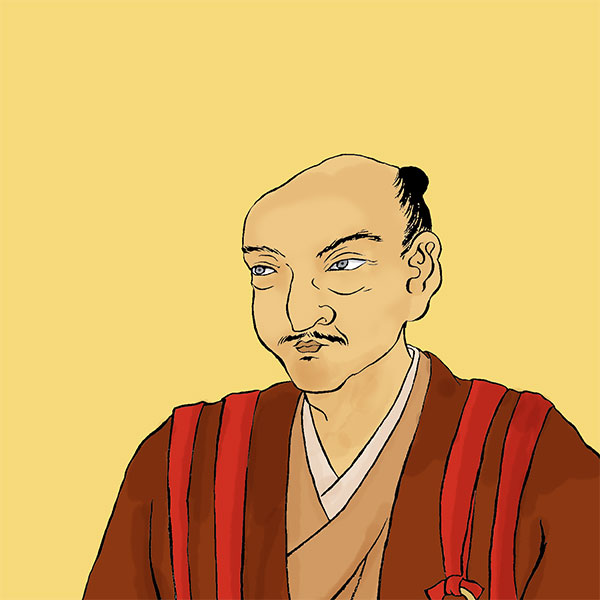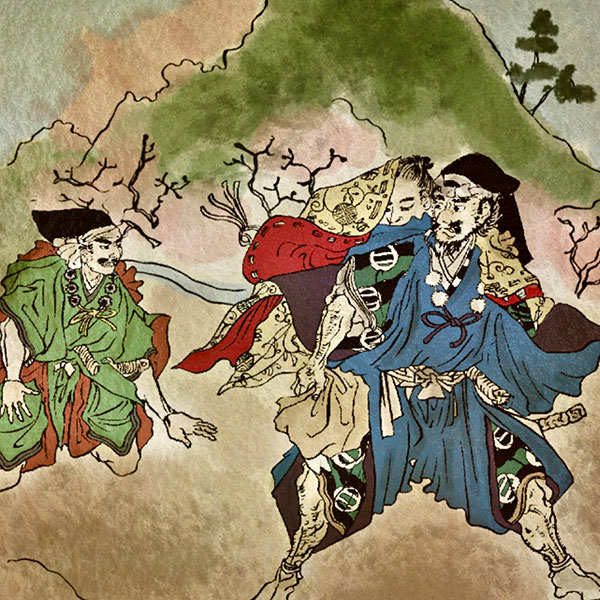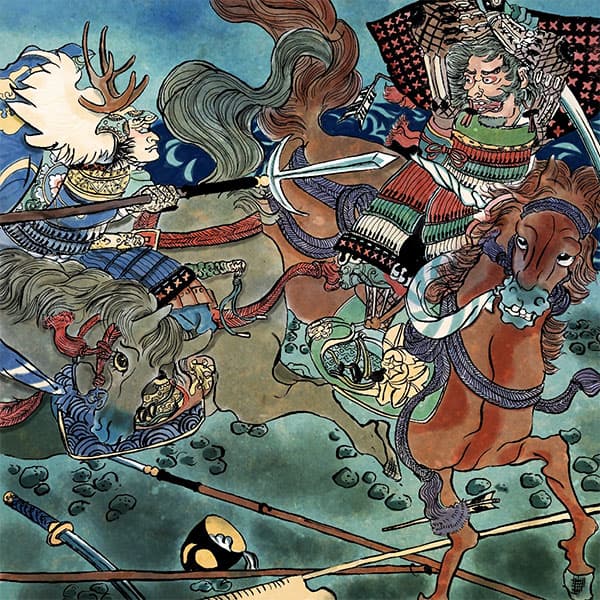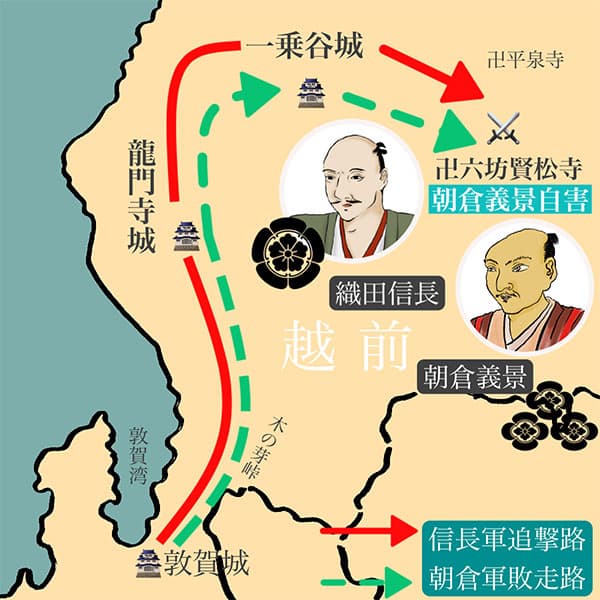Yoshikage Asakura (2/2)Nobleman of Echizen

Yoshikage Asakura
- Article category
- biography
- name
- Yoshikage Asakura (1533-1573)
- place of birth
- Fukui prefecture
- Related castles

Ichijodani Asakura Residence
- related incident
In September of the same year, Eiroku 11 (1568), Yoshiaki Ashikaga, who had left the Asakura family, was supported by Oda Nobunaga and went to Kyoto. Yoshiaki Ashikaga became the 15th Shogun. Yoshiaki, who became a shogun, asked Yoshikage Asakura to support him and twice asked him to take his army to Kyoto. However, Asakura Yoshikage refused Yoshiaki Ashikaga's request, fearing that he would be away from his home country of Echizen Province and hating to follow the Oda family.
In April 1570, Oda Nobunaga headed to Wakasa Province with the purpose of subjugating the Muto family in Wakasa Province. This was with the intention of subjugating the Asakura family, which essentially controlled Wakasa Province, and the Awaya and Kumagai clans, who opposed the Asakura family, quickly surrendered to the Oda family. Yoshikage Asakura sent his army, but Kanegasaki Castle was taken. However, shortly after this, the Asai family of Kitaomi, who belonged to the Oda family, betrayed the Oda family. Oda Nobunaga was caught in a pincer attack by the Asakura and Asai families, and barely escaped with his life to Kyoto.
And June of the same year, Genki 1 (1570). The combined forces of Oda Nobunaga and Tokugawa Ieyasu, and the combined forces of the Asai and Asakura clans clashed at Anegawa. In the battle, the Oda family and the Asai family, the Tokugawa family and the Asakura family clashed head-on, and the Asai family defeated the Oda family and gained an advantage, but the Asakura family was defeated by Yasumasa Sakakibara of the Tokugawa family and was defeated. . From this point on, the Asai and Asakura families collapsed and fled. The Azai family lost many castles and forts, and from then on fell into a disadvantageous position.
Shiga camp and Nobunaga siege network
Now, this happened two months after the Battle of Anegawa.
On August 25th, the Miyoshi family, which had been blockaded in Shikoku, invaded Kinai again. Oda Nobunaga left Gifu, his castle, and headed for Osaka.
On September 12th, the Oda family attacked the Miyoshi family, who had barricaded themselves in Noda Castle (Fukushima Castle) in Osaka. (Battle of Noda Castle and Fukushima Castle) However, at midnight on the 12th, Ishiyama Honganji Temple in Osaka joined the Miyoshi family and started a revolt, marking the beginning of the Battle of Ishiyama. The day before, on the 11th, Yoshikage Asakura and the Asai family also left Kita-Omi and invaded Omi-Sakamoto. On September 20, he defeated and killed Nobunaga's younger brother Shinji Oda and senior vassal Yoshinari Mori, who were resisting at Sakamoto. The next day, on the 21st, he moved to Yamashina, next to Kyoto, to visit the capital. Surprised by this, Oda Nobunaga withdrew from Osaka and returned to Kyoto. The Asakura family and the Azai family barricaded themselves in Mt. Hiei and confronted Nobunaga Oda, who had returned (Shiga no Jin).
From this point on, the two sides engaged in a series of small-scale battles, and in December, in the winter, they made peace by imperial order from Emperor Ogimachi (the First Siege of Nobunaga).
The following year, in February 1571, Oda Nobunaga ordered Kinoshita Hideyoshi (Toyotomi Hideyoshi) to cut off traffic between Echizen and Omi, and tensions between the Oda family and Asai Asakura family continued. In order to build a closer relationship with Ishiyama Hongan-ji Temple, Yoshikage Asakura concluded an engagement between his daughter and Kyonyo, the son of Konyo, Monzeki of Ishiyama Hongan-ji Temple.
In August, Asai Asakura's allied forces attacked Yokoyama Castle and Minoura Castle in Kitaomi, but they were defeated by the Oda family, who threatened their logistics. Yoshikage Asakura always lagged behind the Oda family in military affairs. Furthermore, the Asakura family, which once received instructions from Soteki Asakura, does not have enough vassals to entrust him with his successor. In the Asakura family, the hearts of the vassals began to drift apart.
In 1573, Takeda Shingen of Kai Province made his anti-Oda stance clear and began moving to Kyoto. Yoshikage Asakura also went on the offensive, but Takeda Shingen died of illness on his way to Kyoto. The Takeda family returned to Kai on their way to Kyoto. The Oda family escaped the crisis and began a full-scale attack on the Asakura and Azai families.
Ichijodani Burning and Yoshikage's End
In August 1573, Oda Nobunaga invaded Omi Province, no longer a threat from the Takeda family. Yoshikage Asakura led his army from Ichijodani to attack them, but due to repeated military service and Yoshikage's defeat, some of his vassals refused to serve in the military. Yoshikage, who has prepared both his army and his army, heads to Omi Province.
The Asakura family was defeated after losing Fort Otake and Fort Chonoyama. The Asakura family, which was pursued by the Oda family on Tonezaka, completely collapsed, and Yoshikage Asakura fled back to Ichijodani.
During this time, the Asakura family's army continued to flee, and Butai, who was away from Ichijodani, heard of the defeat of his allies and fled.
Yoshikage Asakura, who abandoned Ichijodani, finally fled to Kenshoji Temple. Asakura Yoshikage died at the age of 41, betrayed by his cousin Asakura Keikage, who followed him until the end. This event took place less than a month after Oda Nobunaga's invasion of Omi Province.
After Yoshikage Asakura's death, his family was also captured and murdered by the Oda family. This is where the Asakura family, the Sengoku daimyo of Echizen, fell.
Nobukage is said to be Yoshikage's son (Edo period)
It is said that Yoshikage Asakura had no adult male children. However, there was a boy, Nobukage Asakura, who was said to be Yoshikage's son and who escaped from trouble when the Asakura family fell. Nobukage became a disciple of Honganji Kyonyo, the son of Konyo of Ishiyama Honganji Temple (Osaka Honganji Temple). Hongan-ji Temple is related by marriage to the Asakura family, and Kyonyo had a deep relationship with Nobukage in the past, as he was engaged to his sister (Yoshikage Asakura's daughter, Shiha) who died young. Nobukage later moved to Edo and in 1628 built Henryuji Temple (Asakurayama/Ichijoin) outside Sakurada, where he received the principal image from Honganji Sennyo and became its chief priest. He passed away at the age of 82 in the first year of the Joo era.
In addition to this, there was Asakura Zaishige, who called himself the Echizen Asakura clan, as a survivor of the Asakura clan. Zaishige's son, Nobumasa Asakura, became the lord of Kakegawa Castle as the chief retainer of Tokugawa Tadanaga (the second son of Tokugawa Hidetada), but he was involved in Tadanaga's Kaiyaku Seppuku. Nobumasa Asakura's younger brother's family continued to serve as the hatamoto of the Edo shogunate.
Ichijodani of the Asakura family
Ichijodani is a medieval mountain castle located in a valley along the Ichijodani River, about 10 kilometers southeast of present-day Fukui city, and the city surrounding it. Although Ichijodani University was not large in size, it was located in a strategic location that allowed access to the Hokuriku Expressway, Mino Kaido, and the highways leading to Echizen Fuchu (Echizen City).
During the Nanbokucho period, the Asakura clan seems to have been based in Ichijodani, and their vassals also came to live there. During the Sengoku period, court nobles, high priests, and cultural figures left the devastated Kyoto and moved there, eventually becoming a city with over 10,000 people, and it was also called the ``Kyoto of the North''.
When Yoshitane Ashikaga, the 10th shogun, fled Kyoto during the Meio Coup, he relied on the Asakura family and visited Ichijodani. Also, after the 13th shogun Yoshiteru Ashikaga was defeated during the Eiroku Incident, his younger brother Kakuyoshi (later the 15th shogun Yoshiaki Ashikaga) visited Ichijodani, and it became a political stage.
When the Asakura family was crushed by Oda Nobunaga, Katsuie Shibata, who was entrusted with the rule, moved his base from Ichijodani in the mountains to Kitanosho (present-day Fukui City), which had excellent land and water transport. The center of the prefecture is Kitanosho (Fukui City). Ichijodani became a frontier, and the great mansions and cities were buried beneath the countryside.
When excavation of Ichijodani began in 1967, the entire city was revealed and began to attract attention. It is now called the Ichijodani Asakura Ruins and has been designated as a national special historic site. In addition, four Japanese gardens have been designated as national special scenic spots under the name ``Ichijodani Asakura Gardens''.
Reread Yoshikage Asakura's article
- related incident

- WriterTomoyo Hazuki(Writer)I have loved history and geography since my student days, and have enjoyed visiting historical sites, temples and shrines, and researching ancient documents. He is especially strong in medieval Japanese history and European history in world history, and has read a wide range of things, including primary sources and historical entertainment novels. There are so many favorite military commanders and castles that I can't name them, but I especially like Hisashi Matsunaga and Mitsuhide Akechi, and when it comes to castles, I like Hikone Castle and Fushimi Castle. Once you start talking about the lives of warlords and the history of castles, there's a side of you that can't stop talking about them.






